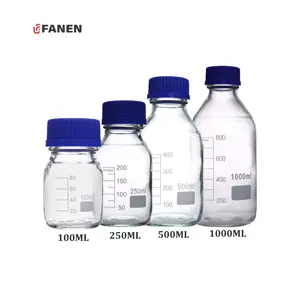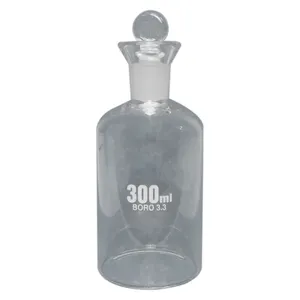
Upside Down Peri Bottle For Postpartum Care Portable Bidets For New Baby Perineal Recovery And Cleansing After Birth

Fanen Laboratory Use Disposables Glassware Media Bottle Boro3.3 With Plastic Blue Screw Cover Reagent Bottle






The BOD bottle, standing for Biological Oxygen Demand bottle, is a specialized container designed for the analysis of water quality in environmental testing, wastewater treatment, and scientific research. These bottles are meticulously crafted to ensure precise measurement of the oxygen demand exerted by microorganisms in a water sample.
Glass BOD bottles are prevalent due to their non-reactive nature, ensuring that no additional variables interfere with the test results. The bod bottle with stopper is a common type, often made of glass, and comes with a ground glass stopper to create an airtight seal, preserving the integrity of the sample. For applications requiring protection from light, amber-tinted bottles are available to safeguard light-sensitive chemicals. In contrast, plastic BOD bottles offer a lightweight and break-resistant alternative, suitable for less sensitive samples and fieldwork.
The versatility of BOD bottles is evident in their range of sizes and applications. The bod bottle 300ml is a standard size used in many laboratories for its convenience in handling and sufficient volume for typical tests. For more specialized needs, disposable BOD bottles provide a practical solution, eliminating the need for cleaning and reducing the risk of cross-contamination. The oxitop bottles, another variant, are designed for respirometric testing methods, which are essential for BOD analysis.
Selecting the appropriate BOD bottle depends on the specific requirements of the test being conducted. For instance, bod glass bottles are preferred for high-precision laboratory analysis due to their chemical inertness and clarity. Meanwhile, biological oxygen demand bottle use extends beyond mere storage; they are integral in titrimetric and manometric testing methods. When working with semi-solid or solid samples, wide-mouth designs facilitate easier sample insertion and removal.
Utilizing the right BOD bottle, such as the bod bottle borosil or wheaton bod bottle, ensures accurate and reliable results. These bottles are engineered to withstand the rigors of laboratory procedures, including autoclaving for sterilization. The precision in manufacturing guarantees that each bottle meets the necessary volume specifications, which is crucial for BOD testing.
In summary, the BOD bottle is an indispensable component in the assessment of water quality. Its design and material composition are critical for accurate measurements of biological oxygen demand. With a variety of types available, such as the 300 ml BOD bottle and bod flask, laboratories can select the appropriate bottle to meet their testing needs, ensuring that environmental standards are upheld and water quality is accurately assessed.